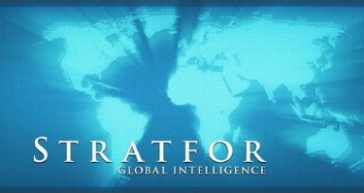http://www.telegraphindia.com/1150815/jsp/frontpage/story_37396.jsp#.Vc7YrfmUdO0
Nishit Dholabhai
New Delhi, Aug. 14: The 21st Special Forces who pursued Northeast militants along the Myanmar border in June have won a bagful of Independence Day honours, including a Kirti Chakra, a Shaurya Chakra and six Sena Medals for gallantry.
But the government has downplayed the reason for awarding the paras, keeping in mind sensitivities at a crucial stage of the Naga peace talks and the diplomatic tensions triggered in June by claims that the operation had crossed into Myanmar.
Although the citations do not become public so early, defence ministry officials are ever eager to brief journalists on the details of the major gallantry award winners. They did so today about all except the paras.
The current circumspection contrasts with the chest-thumping in June, when defence minister Manohar Parrikar and junior I&B minister Rajyavardhan Rathore had publicly claimed that the Indian troops had entered Myanmar, forcing the neighbour to issue a public denial.
Overall, two Kirti Chakras --- the second-highest peacetime gallantry award --- have been awarded, both to the army. Of the 10 Shaurya Chakras --- third-highest among peacetime gallantry awards --- five have gone to the army, one each to the air force, navy and the paramilitary Central Reserve Police Force, and two to Jammu and Kashmir police.
A total of 49 Sena Medals for gallantry (as opposed to Sena Medals for distinguished service) have been announced for the army, two Nao Sena Medals for gallantry for the navy, and three Vayu Sena Medals for gallantry for the air force.
Lt Col Nectar Sajenbam has won the Kirti Chakra for the courage shown under his leadership during the operation along the Myanmar border.
The other Kirti Chakra has been awarded posthumously to Naib Subedar Rajesh Kumar of the 30 Rashtriya Rifles, 14 Mahar, who died fighting terrorists last year in Handwara, Jammu and Kashmir.
One of the Shaurya Chakras has gone to Havildar Tanka Kumar Limbu of the 21st Special Forces, whose commandos received combat training in Himachal Pradesh and Vairangte, Mizoram.
Among the other Shaurya winners is Commander Mohan Milind Mokashi of the navy who led the INS Sumitra into the Aden port on March 31 despite the presence of armed rebels along the harbour. Mokashi carried out five evacuations from the Yemeni cities of Aden, Ash Shihr and Al Hudaydah.
Another is Wing Commander Sandeep Singh, awarded for evacuating 22 slain CRPF personnel and five wounded after a battle with Maoists in Chhattisgarh last November.
The Myanmar border operation of June 10 yielded Sena Medals for Major Prashant Yadav, Lt Krishan Kant, Havildar Chanar Singh, Havildar Ram Bahadur Tamang, Naik Manoj Kumar and Naik Bhupinder Singh.
Unofficially, sources said the paras had crossed into Myanmar and raided shelters of the National Socialist Council of Nagaland (Khaplang), the People's Liberation Army (of Manipur) and the United National Liberation Front of West South East Asia, a grouping of Northeast rebels including Paresh Barua's Ulfa.
The operation came after cross-border raids by the militants had killed 18 army soldiers in Manipur on June 4, months after Khaplang's group had "unilaterally" scrapped its 14-year-old ceasefire agreement with the Centre.
But the government, which signed a "framework of agreement" with the National Socialist Council of Nagalim (Isak-Muivah) on August 3, now hopes to bring all Naga outfits including Khaplang's on board for the sake of a lasting Naga peace.
With Ulfa and the Manipur outfits active, too, the northeastern insurgency theatre has been on the boil this year. The Assam Rifles, India's oldest paramilitary force, which is officered by the army, has won one Bar to Sena Medal and five Sena Medals for gallantry.
















